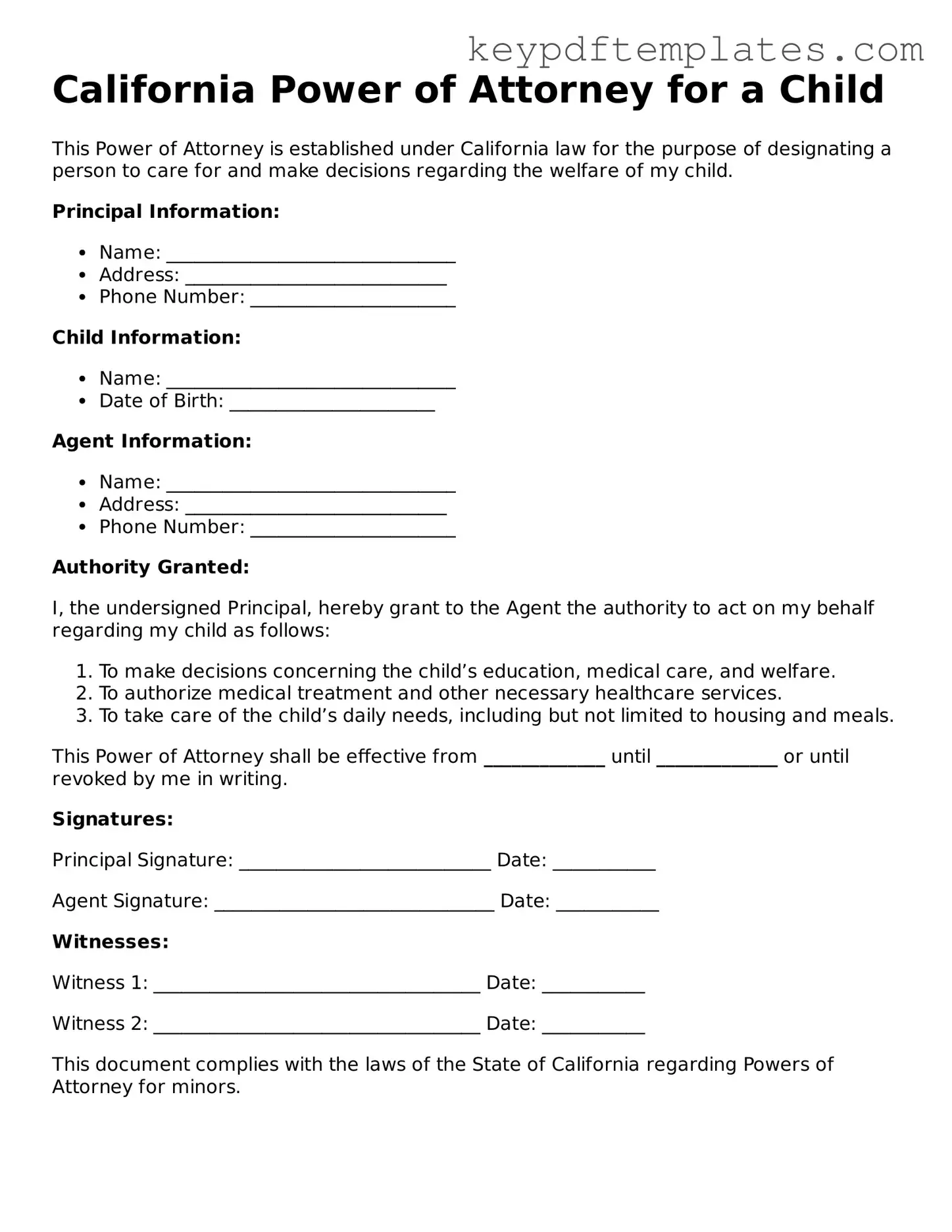Legal Power of Attorney for a Child Document for the State of California
The California Power of Attorney for a Child form is a legal document that allows a parent or guardian to grant temporary authority to another adult to make decisions on behalf of their child. This form can be crucial in situations where the parent is unavailable, ensuring that the child's needs are met without interruption. Understanding its purpose and proper use is essential for any caregiver navigating these responsibilities.
Modify Document Online
